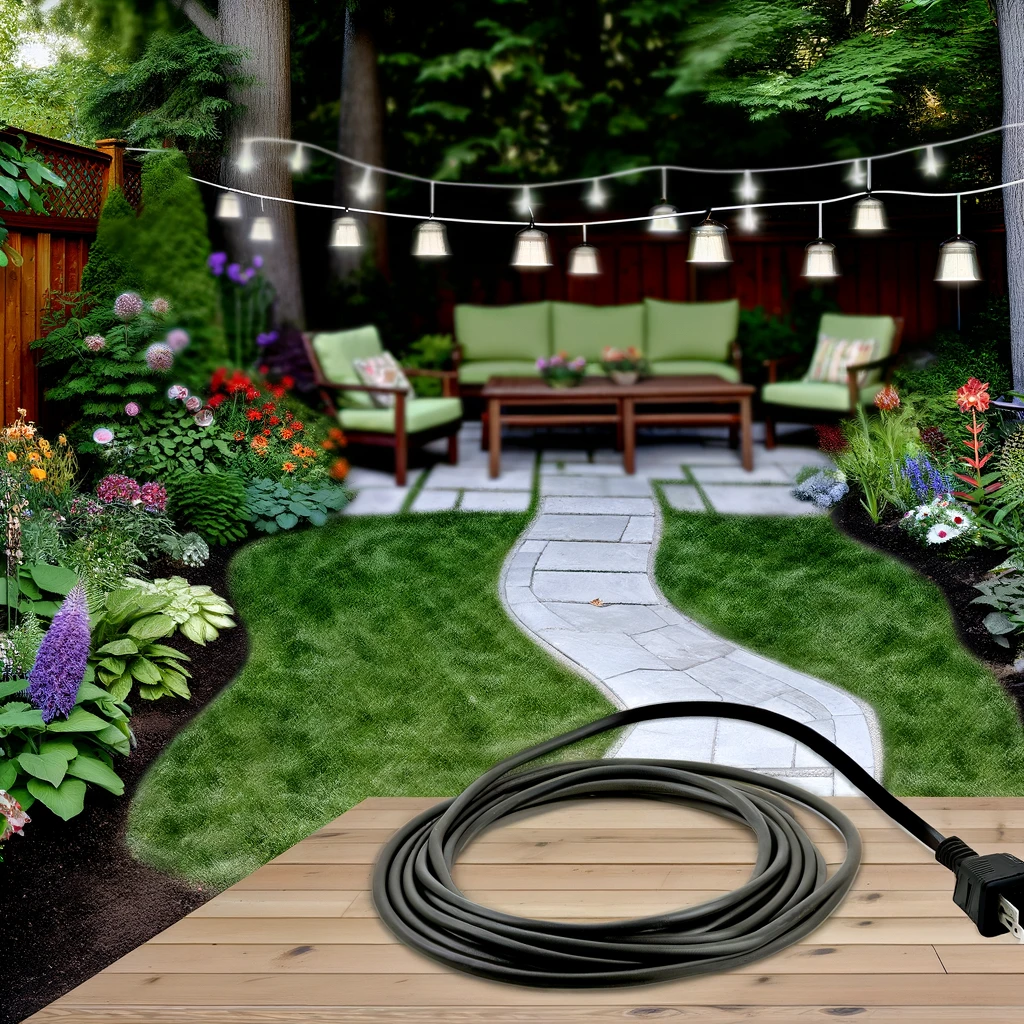
24 HOURS & EMERGENCIES
07301 611 578

Back to Blog
How to Choose the Right Extension Cord for Outdoor Use: Top Tips and Best Safety Practices
Advice
8th April 2024

Navigating the aisles of extension cords can be overwhelming, especially when you need one that’s safe for outdoor use. Whether it's for holiday decorations, gardening tools, or an outdoor entertainment setup, selecting the right extension cord is crucial for both performance and safety. This article aims to demystify the process, offering clear guidance on how to choose an outdoor extension cord that meets your needs without compromising safety. By understanding the key features of outdoor-rated extension cords, you can make an informed decision, potentially saving you the hassle and risk of using the wrong type.
Understanding Extension Cord Ratings
Not all extension cords are created equal. They come in various sizes, lengths, and ratings, each designed for specific applications. The first step in choosing an outdoor extension cord is understanding the ratings:
Indoor vs. Outdoor: Outdoor extension cords are specifically designed to withstand environmental elements like sunlight, moisture, and temperature variations. They're marked with a "W" on the packaging, indicating they're suitable for wet conditions and outdoor use.
Gauge: The wire gauge (AWG) indicates the size of the wires inside the cord. A lower number means a thicker wire, which can carry more current for heavier loads or longer distances without overheating.
Amperage: This rating tells you how much current the cord can safely handle. Ensure the cord’s amperage rating matches or exceeds the power requirements of the device you plan to use.
Top Tips for Choosing an Outdoor Extension Cord
1. Look for the 'W' Rating
Always choose an extension cord marked with a "W" to ensure it's designed for outdoor use. These cords have a durable, weather-resistant jacket that protects against moisture, abrasion, and exposure to the sun.
2. Select the Right Gauge and Length
The right gauge and length are crucial to prevent voltage drop and overheating. For most outdoor garden tools and decorations, a 16-gauge cord is sufficient. However, for more power-intensive equipment or longer distances, you may need a 14 or even a 12-gauge cord. Keep the cord as short as possible to avoid potential hazards and energy loss.
3. Ensure Adequate Amperage
Check the amperage rating of your outdoor device and ensure the extension cord can handle its power needs. Using a cord with an inadequate amperage rating can lead to overheating and potentially start a fire.
4. Opt for a Cord with a Built-in GFCI
For added safety, especially in wet environments, consider an extension cord with a built-in Ground Fault Circuit Interrupter (GFCI). This feature can prevent electric shock by quickly cutting off power if a fault is detected.
Best Safety Practices for Using Outdoor Extension Cords
Avoid Daisy Chaining: Connecting multiple extension cords together, known as daisy chaining, can be dangerous. Instead, use a single cord of the appropriate length to reach your power source.
Regular Inspection: Before each use, inspect the cord for any signs of damage, such as fraying, cuts, or exposed wires. Damaged cords should be replaced immediately.
Proper Storage: When not in use, store your outdoor extension cords indoors to protect them from the elements. Coil them loosely to prevent kinks and damage.
Keep Away from Water: Even if an extension cord is rated for outdoor use, try to keep connections and the cord itself off the ground and away from standing water.
When to Call a Professional
If your outdoor power needs exceed what a standard extension cord can safely provide, it may be time to consider more permanent solutions, such as outdoor outlets or dedicated circuits installed by a licensed electrician. This is especially true for high-powered equipment or permanent outdoor structures requiring electricity.
Conclusion
Choosing the right extension cord for outdoor use is essential for ensuring safety and efficiency. By paying attention to the cord’s rating, gauge, length, and amperage, and following best safety practices, you can safely power your outdoor activities. Remember, the key is to prioritise safety over convenience to protect yourself, your equipment, and your home. Should your electrical needs surpass the capabilities of extension cords, consulting with a professional electrician is always the best course of action to ensure your outdoor power setup is both safe and compliant with local codes.
Read More
Explore more articles on the world of Electrics!
2024 Ⓒ Spark Electrics